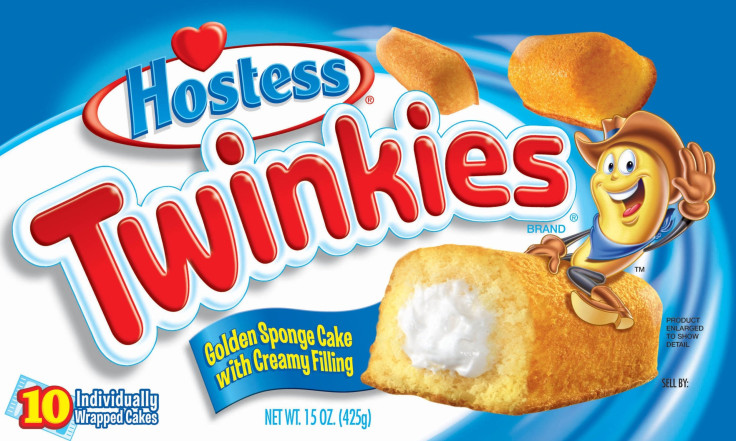Hostess Bankruptcy And Science Prove Twinkies Are Not Immortal

Hostess fans may soon start stockpiling their favorite snack cakes, with the company announcing that it's expecting to close its doors due to an ongoing bakery worker's strike. Just don't expect those Twinkies and Ho-Hos to last you until the end of time.
While it's a popular urban myth that the Twinkie's chemical-packed composition makes it last for decades, Hostess says the Twinkie only has a shelf life of 25 days. The confection does last much longer than other baked goods, primarily because it doesn't have that much dairy in it -- just a bit of egg to help leaven the dough.
The modern Twinkie is a much different beast from the 1930s model. Originally, the Twinkie had a banana cream filling, but banana shortages during World War II forced Hostess to switch to vanilla flavoring. Many of the ingredients in the original recipe have also been swapped out for things more rooted in the lab than the farm.
Eight of the Twinkie's thirty-something ingredients (some sources say 37, others 39) are corn-based: high fructose corn syrup, fructose, corn starch and glucose, to name but a few. The cake also has emulsifying chemicals called monoglycerides and diglycerides, which replace most of the eggs that would normally be used in a baked good. Hydrogenated shortening goes in instead of butter, and polysorbate 60 replaces creamy fat in the Twinkie's filling.
For more visual learners, photographer Dwight Eschliman has taken pictures all of the components of a Twinkie for his piece "37 or So Ingredients."
There are also some more recognizable food ingredients in the Twinkie like bleached wheat flour and sugar from sugar beets and sugar cane.
Only one ingredient in the Twinkie is added solely for preservative effect: sorbic acid. The real secret to the Twinkie's staying power is replacing butter, fat and eggs with synthesized alternatives. Plastic packaging helps a lot too.
A single Twinkie has 150 calories, with 41 of those coming from fat. It provides 7 percent of your daily recommended amount of cholesterol and 13 percent of your daily dose of saturated fat. Burning off the caloric value of one Twinkie would take 42 minutes of walking or 17 minutes of jogging, according to Calorie King.
While even big Hostess fans aren't likely to make Twinkies a cornerstone of their diets, one Kansas State University nutrition professor made headlines in 2010 for doing just that. Mark Haub ate mostly Hostess and Little Debbie cakes, chips, Oreos and other junk food for 10 weeks to prove a point about weight loss -- that calorie counting is king.
The results from Haub's “convenience store diet” are somewhat validating -- he lost 27 pounds. The key was, even though he was eating junk, Haub limited himself to 1,800 calories per day. At the start of the experiment, his body's maintenance level was 2,600 calories per day, so over the course of the experiment, he was burning more calories than he consumed.
What's more, Haub's bad cholesterol dropped, and his good cholesterol levels rose thanks to his Twinkie-laden diet.
"That's where the head scratching comes," Haub told CNN. "What does that mean? Does that mean I'm healthier? Or does it mean how we define health from a biology standpoint, that we're missing something?"
Replicating Haub's diet isn't recommended, since the long-term effects of all that sugar could outweigh the benefits of weight loss.
And for worried snack cake fans, remember that even if Hostess closes its doors, it probably won't be long before another company buys up the Twinkie trademark and recipe and starts pumping out cream-filled cake tubes to satiate America's bottomless hunger for processed food. Twinkies might only last for 25 days on the shelf, but profitable intellectual property can last forever.
© Copyright IBTimes 2024. All rights reserved.





















